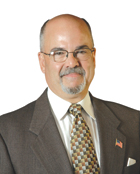
Has your Investment Committee discussed the amount of risk in the investment portfolio lately? The S&P has almost doubled since its low in March 2009, and many organizations are interested in improving their returns by taking on more risk. The investment advisor working with institutional investments is hopefully cautioning that move.
Healthcare organizations need certain rates of return to help fund the operations or allow payments from foundations without affecting the principal amount. As the financial markets experience continued upward momentum, many healthcare finance committees are asking the question about getting higher portfolio returns by accepting higher levels of investment risk.
Typically, the committees that have seen the investment portfolio receive a return of 3% are asking why the investments are not up 6%. But it is often the very same committees that did not want to lose 6% a year ago. The real question the investment committee should be asking is how many investment losses are acceptable?
Ten-year Treasuries are yielding less than 3.5% and there are many headlines about a bond market bubble, encouraging discussions about equities. David Kelly, chief market strategist at JP Morgan Asset Management, says the 2008-2009 market downturn was so extreme that stocks still have a way to go to recovery. But mutual fund outflows show many investors still are not taking advantage of the run-up in the equity markets. In March, U.S. equity funds had $934 million in outflows while taxable bond funds had $18 billion in inflows. These investment flows show investors are still acting conservatively.
The overriding message is to review the investment policy to ensure it matches anticipated returns with risk levels acceptable to the investment committee. Do not lightly change the levels of investment risk to get higher returns — such strategies often lead to disappointing results.
From the July 01, 2011 Issue of McKnight's Long-Term Care News




